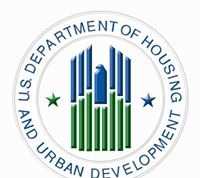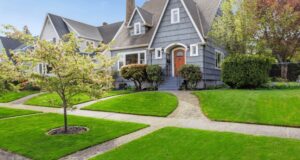America’s Most Lucrative Neighborhoods
Twenty years ago, few house-hunters were interested in Charlestown, Mass. In this small, dense neighborhood, just across the river from Boston, commercial fishing piers and industrial development fell in the shadow of Interstate 93. Property values were appropriately low.
But the Big Dig, a project that rerouted part of Interstate 93 under the heart of Boston and officially completed late last month, changed that by opening the Charlestown waterfront to luxury real estate development. With the area’s highways underground, the waterfront became attractive to buyers seeking views of the city.
Now Charlestown has become an option for people “priced out of Back Bay or Beacon Hill,” says Candice Macoul, a broker at Otis & Ahearn in Boston. That’s because new condos or townhouses, as well as older, renovated, colonial-style homes, are now available to buyers seeking luxury housing.
What’s happened in Charlestown shows how rezoning and a change in public infrastructure can help bolster an area’s home prices. Those along the waterfront have grown 345% since 1990, the most of any neighborhood in Boston. Joining Charlestown on our list of top-performers are Society Hill in Philadelphia, Wicker Park in Chicago, downtown Minneapolis, and the Sweet Auburn/Grant Park area of Atlanta.
In order to find other such markets, Forbes.com compiled post-1990 price appreciation data from NeighborhoodScout.com, a Rhode Island-based real estate research firm that tracks these numbers by aggregating repeat home sales and price data from the U.S. Census Bureau, as well as quarterly mortgage data from Fannie Mae (nyse: FNM – news – people ) and Freddie Mac (nyse: FRE – news – people ). We ended up with the neighborhoods in the country’s 15 largest metros that experienced the greatest percentage increases in that time.
Behind The Numbers
Unlike our study of blue-chip neighborhoods, we applied no constraints; in that story, each area had to have featured homes with sales figures above the city’s 1990 median price, and also grown the most since then.
One might think of the markets on this list as tech stocks: Blue chips are robust and consistent performers, while tech stocks are traditionally far more volatile–and the sharp swings aren’t for the faint of heart. From a pure cash perspective, they are often the most lucrative, but there’s no guarantee they’ll continue their upward trend. Still, you occasionally get a “Google” or an “Apple”–and just ask their giddy shareholders how that’s worked out for them.
What’s going on in your neighborhood? Are home prices dipping? Values rising? Weigh in. Add your thoughts in the Reader Comments section below.
The most obvious trend in the neighborhoods here: many of them weren’t valuable in 1990. That’s good news for those who invested.
A perfect example is Dallas, which, at that time, was just rebounding from the local savings-and-loan crisis. Conditions had become so difficult that Resolution Trust, a federal asset management company, had to bail out crashing banks and soaring real estate defaults.
“In 1985, we were in a ditch,” says Tom Rhodes, a broker with Rhodes Real Estate in Dallas. “Our whole world fell apart, but 1990 it came back. [Since then,] we’ve continued to show a 3% to 5% appreciation on existing homes, and lots have gone up about 20% per year.”
Some areas, like University Park and Highland Park, were the first to rebound, thanks to factors such as higher-quality homes and good schools. Home buyers eager to move to University Park, for example, bought the cheaper, smaller houses in the northeast section of the neighborhood–then razed them and built bigger homes. Rhodes estimates 75% of the homes in the northeast University Park area have been torn down and rebuilt since 1990.
Profitable Places
Elsewhere, neighborhoods like Hamilton Heights in New York have appreciated at breakneck rates despite little new development. This area in upper Manhattan, near Riverbank State Park, features high-quality brownstones and townhouses that have been sold to families looking for more space uptown, or converted to condos. Other obvious drivers are Manhattan’s post-1990 economic prosperity and the city’s well-documented turnaround in crime. Though properties from 149th Street on up weren’t desirable in 1990, young professionals and families from lower Manhattan are now making the move. That area has appreciated, in turn, 4,391% since 1990–with much of the same housing stock in place during that time.
“A lot of people are looking for more space, and for the pre-war detailing,” says Juan Royal, a broker with Nest Seekers International in Hamilton Heights. “There’s been a large influx of young families and young professionals…we have two Starbucks, and counting.”
In some cases, a premium neighborhood was an area’s most lucrative. Take Miami Beach. The city’s ritzy downtown area has appreciated exponentially since 1990, as beach-front mansions and luxury condos have drawn upper-class buyers seeking space to soak up the sun and the sizzling social scene. Parts of the city center have increased in value 1,532% since 1990; the median property there is now worth a whopping $1.64 million.
Like the rest of the areas on our list, Miami Beach is no doubt lucrative, but it’s not likely to grow much more any time soon. All these places have reached the peak of their price growth–even the most lucrative neighborhoods can’t appreciate 20% to 40% annually forever–so you’re not likely to become extraordinarily wealthy by buying in now.
By FORBES.com














